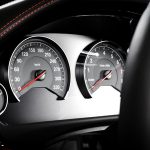1. Know Your Weather Risks
Understanding how your local climate affects your vehicle is the first step to both de-icing your car in winter and preventing overheating during the summer months. The United States has diverse weather conditions—from the snowy winters of the Northeast and Midwest to the scorching summers of the Southwest. By assessing your region’s seasonal risks, you can better prepare your vehicle for temperature extremes and avoid unnecessary breakdowns or damage. Below is a table summarizing common U.S. regions and their respective weather-related vehicle challenges:
| Region | Winter Risks | Summer Risks |
|---|---|---|
| Northeast & Midwest | Heavy snow, ice, freezing temperatures | Moderate heat waves, humidity |
| Southeast | Mild frost, occasional ice storms | High humidity, extreme heat |
| Southwest | Rare frost, cold nights in desert areas | Intense heat, risk of overheating |
| Pacific Northwest | Sleet, icy rain, occasional snow | Mild summers, rare heat spikes |
| Mountain States | Heavy snow, rapid temperature drops | Cool nights, hot days at lower elevations |
Before winter sets in or summer heats up, take time to research typical weather patterns in your area. This knowledge will help you determine which preventive measures—like stocking up on de-icer or checking your cooling system—are most crucial for keeping your car running smoothly all year long.
Winter Morning Essentials: De-Icing Your Car
Waking up to a car encased in ice is a common scenario for many Americans during winter. Properly de-icing your vehicle not only ensures safety but also protects your car’s exterior and components from unnecessary damage. Here’s a step-by-step guide to safely and efficiently remove ice from your windshield, windows, and doors:
Step-by-Step De-Icing Guide
| Step | Description | Pro Tip |
|---|---|---|
| 1. Start Your Engine | Turn on your car and set the defroster to the highest setting to begin warming up the interior glass. | Avoid revving the engine; let it idle to gradually warm up. |
| 2. Clear Off Snow | Use a soft-bristled snow brush to sweep off loose snow from the roof, hood, windshield, and windows. | Work from top to bottom to prevent re-covering cleaned areas. |
| 3. Apply De-Icer Solution | Spray a commercial de-icer or a homemade mix (3:1 vinegar to water) onto icy surfaces. | Avoid hot water—it can crack cold glass! |
| 4. Scrape Carefully | Use a plastic ice scraper to gently chip away at the ice, starting with the windshield and moving to side windows and mirrors. | Never use metal tools; they can scratch glass and paint. |
| 5. Free Frozen Doors & Locks | If doors are stuck, gently push—not pull—to break the seal. Use lock de-icer or hand sanitizer on keyholes if necessary. | Prevent freezing by applying silicone spray on door seals before cold snaps. |
| 6. Finish Up & Inspect | Double-check all windows and mirrors for visibility before driving off. Make sure wipers aren’t frozen to the windshield. | Lifting wiper blades overnight can help prevent sticking. |
Additional Safety Tips for American Winters
- Avoid Shortcuts: Don’t drive with just a peephole cleared—fully de-ice all glass for safe vision as required by law in most states.
- No Hot Water: Pouring hot water on frozen glass can cause sudden cracks due to thermal shock—always use room temperature solutions.
- Stay Prepared: Keep an emergency kit in your car with extra de-icer spray, gloves, and an ice scraper throughout the winter months.
Your Winter De-Icing Checklist for Peace of Mind
- Ice scraper and snow brush in vehicle at all times
- Bottle of commercial or homemade de-icer solution ready
- Sufficient windshield washer fluid rated for low temperatures
- Gloves and warm clothing available for early morning starts
By following these steps each frosty morning, you’ll keep your commute safe while protecting your vehicle from winter’s harshest conditions—all with techniques trusted by drivers across America.
![]()
3. Tools and Tips for Effective De-Icing
When winter hits, the right tools and techniques make all the difference in safely de-icing your car without causing unwanted damage. Below is an overview of must-have products and some pro tips to help you tackle ice buildup efficiently while keeping your vehicle’s surfaces protected.
Essential De-Icing Tools Every Car Owner Needs
| Product | Description | Why It Matters |
|---|---|---|
| Ice Scraper | Plastic or reinforced scraper designed to remove ice from windows and mirrors | Prevents scratching glass and is easy to handle even with gloves on |
| De-Icing Spray | A chemical solution that melts ice quickly when sprayed on windshields and locks | Saves time and reduces effort, especially on thick ice layers |
| Snow Brush | Brush with soft bristles for removing snow without damaging paint | Keeps paint intact while clearing off heavy snow before scraping ice |
| Windshield Cover | A cover placed over the windshield to prevent ice formation overnight | Saves morning prep time by eliminating the need for scraping altogether |
Pro Tips to Avoid Damaging Your Car’s Surfaces
- Choose Plastic Over Metal: Always use a plastic scraper rather than metal tools, which can scratch glass and paint.
- Let Your Car Warm Up: Start your engine and let the defroster run for a few minutes before scraping. This loosens the ice and makes removal easier.
- Avoid Hot Water: Never pour hot water on frozen windows. The rapid temperature change can crack glass.
- Apply De-Icer Evenly: Use de-icing spray sparingly and evenly to avoid streaks and residue buildup.
- Treat Seals and Locks: Use silicone-based sprays on door seals and graphite lubricant in locks to prevent freezing without causing long-term damage.
- Clear Snow Before Ice: Always brush away loose snow before tackling underlying ice to prevent scratching your car’s finish.
- Store Tools Properly: Keep your de-icing tools inside your home or garage overnight so they’re not frozen or brittle when you need them.
Your Winter De-Icing Checklist:
- Ice scraper (plastic, non-metal)
- Chemical de-icing spray
- Soft-bristled snow brush
- Windshield cover for overnight protection
- Silicone spray for door seals/graphite for locks
The right preparation and products ensure you stay safe, protect your vehicle’s value, and get on the road faster during harsh winter mornings. Take these steps seriously—your car (and your wallet) will thank you!
4. Smart Start-Ups: Warm Up Without Wasting Gas
Warming up your car properly during cold winter mornings is crucial for both your vehicle’s performance and your wallet. Gone are the days when you needed to let your engine idle for 10-15 minutes before driving off. Today’s vehicles, especially those with fuel-injected engines, require a much shorter warm-up time. Here’s how to efficiently start your car in chilly weather without unnecessarily burning gas or harming your engine:
Modern Warm-Up Best Practices
| Step | Action | Why It Matters |
|---|---|---|
| 1 | Start the Engine | Initiates oil circulation and begins warming internal components. |
| 2 | Wait 30 Seconds to 1 Minute | This short period allows oil to reach critical engine parts without excessive idling. |
| 3 | Drive Gently | Light driving warms up the engine and transmission faster than idling, improving fuel efficiency and reducing emissions. |
| 4 | Avoid Heavy Acceleration Until Fully Warmed Up | This prevents unnecessary wear on cold components and ensures optimal performance. |
Cultural Tips for American Drivers
In many U.S. states, “idling laws” prohibit leaving a running vehicle unattended. Not only does excessive idling waste gas and pollute the air, but it can also earn you a ticket in places like California or New York. Instead, bundle up, scrape off ice while the car warms just briefly, and then hit the road gently. Remote starters are popular in colder climates but use them wisely—limit run time to avoid wasting gas.
The Bottom Line on Winter Start-Ups
Your best bet for both de-icing and preventing summer overheating is to keep all fluids topped off and follow smart, modern start-up routines. This approach maximizes fuel economy, prolongs engine life, and keeps you within local regulations—all while getting you safely on your way during any season.
5. Summer Strategies: Prevent Your Car from Overheating
When the summer heat hits, preventing your car from overheating is just as important as de-icing in winter. High temperatures can cause engine damage, evaporate essential fluids, and make driving uncomfortable. Here are some practical steps you can take to keep your engine cool during those sweltering months.
Essential Steps to Keep Your Engine Cool
| Step | Action | Why It Matters |
|---|---|---|
| Check Coolant Levels Regularly | Inspect and top off coolant before long drives or heat waves. | Proper coolant levels help dissipate engine heat efficiently. |
| Use Sunshades | Place reflective sunshades on your dashboard and rear window when parked. | Keeps interior and engine bay cooler by blocking direct sunlight. |
| Park Smart | Choose shaded areas or garages whenever possible. | Reduces overall car temperature and stress on engine components. |
| Monitor Temperature Gauge | Keep an eye on your dashboard’s temperature indicator while driving. | Early detection of overheating prevents engine damage. |
| Avoid Excessive Idling | Turn off your engine if you’ll be stopped for a while. | Idling can cause unnecessary heat build-up, especially in traffic jams. |
| Inspect Hoses and Belts | Check for cracks, leaks, or wear in cooling system components. | Damaged hoses or belts can lead to coolant loss and overheating. |
| Flush the Radiator Seasonally | Schedule a radiator flush at least once a year or per manufacturer’s recommendation. | Keeps the cooling system clean for optimal performance in hot weather. |
Pro Tips for American Drivers
- If you’re planning a summer road trip across states, pack extra coolant and water just in case.
- Avoid using the A/C at full blast immediately after starting; let your car air out first with windows down for a minute.
- If your car does start to overheat, pull over safely, turn off the engine, and wait until it cools before checking under the hood—never open a hot radiator cap!
The Bottom Line
Taking these simple but effective steps will help keep your car cool under pressure all summer long. By staying proactive with maintenance and making smart choices about where and how you park, you’ll not only protect your vehicle’s engine but also enjoy a safer and more comfortable ride throughout the hottest months of the year.
6. Emergency Preparedness for Extreme Temps
When driving in the United States, unpredictable weather can strike at any time—be it a sudden winter freeze or an unexpected summer heatwave. Having an emergency kit in your car isn’t just smart; it’s essential for safety. Here’s how you can prepare your vehicle to tackle both icy winters and scorching summers with confidence.
Winter Freeze Essentials
Cold snaps can happen overnight, leaving roads slick and hazardous. The right supplies can keep you safe if you get stranded or face delays. Consider keeping these items in your trunk:
| Winter Item | Purpose |
|---|---|
| Ice scraper & snow brush | Clears ice and snow from windows and mirrors |
| Thermal blanket | Keeps you warm if you’re stuck in cold conditions |
| Jumper cables | Restarts a dead battery in freezing temps |
| Sand or kitty litter | Adds traction if your tires get stuck on ice |
| Gloves & hand warmers | Protects hands from frostbite while handling car problems |
Summer Heatwave Essentials
Extreme heat can be just as dangerous as icy conditions, particularly if your car overheats or you’re stuck roadside. Here’s what to keep handy for hot weather emergencies:
| Summer Item | Purpose |
|---|---|
| Bottled water | Prevents dehydration during breakdowns or long waits |
| Sunscreen & hats | Shields skin from harmful UV rays while waiting outside the car |
| Cool packs or wet towels | Lowers body temperature quickly if you overheat |
| Portable phone charger | Keeps your phone powered for emergency calls or GPS help |
All-Season Safety Tips
- Check your emergency kit twice a year—once before winter and once before summer—to replace expired items.
- Store kits in an accessible spot like the trunk or under a seat so they’re easy to grab in a hurry.
- Add a basic first aid kit and flashlight with extra batteries for year-round readiness.
Your Roadside Action Plan
If you find yourself stranded, stay with your vehicle whenever possible, especially in remote areas. Turn on hazard lights, call for assistance, and use your emergency supplies to stay comfortable until help arrives. By planning ahead, you’ll be ready for whatever Mother Nature throws your way—and keep yourself safe no matter the season.


